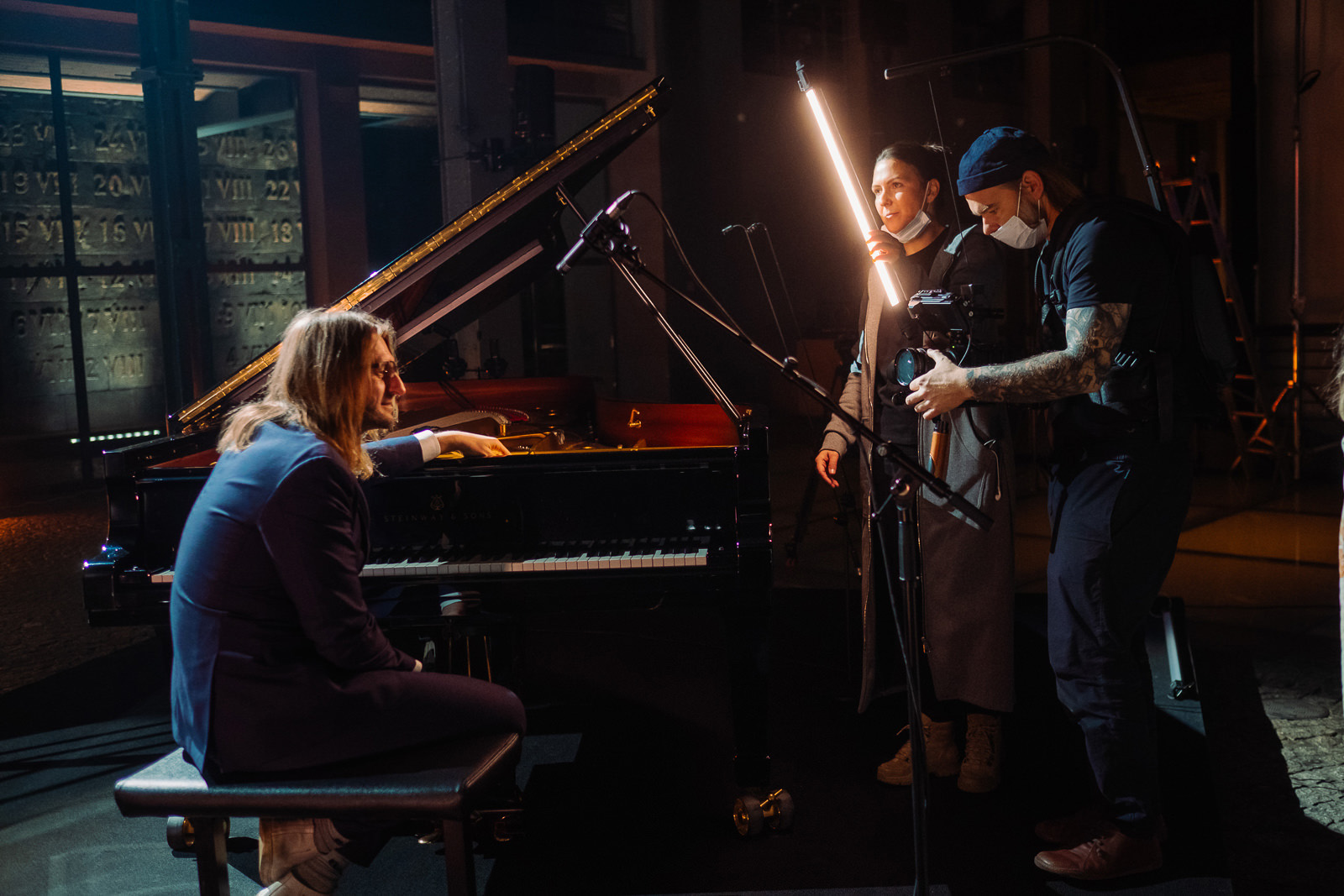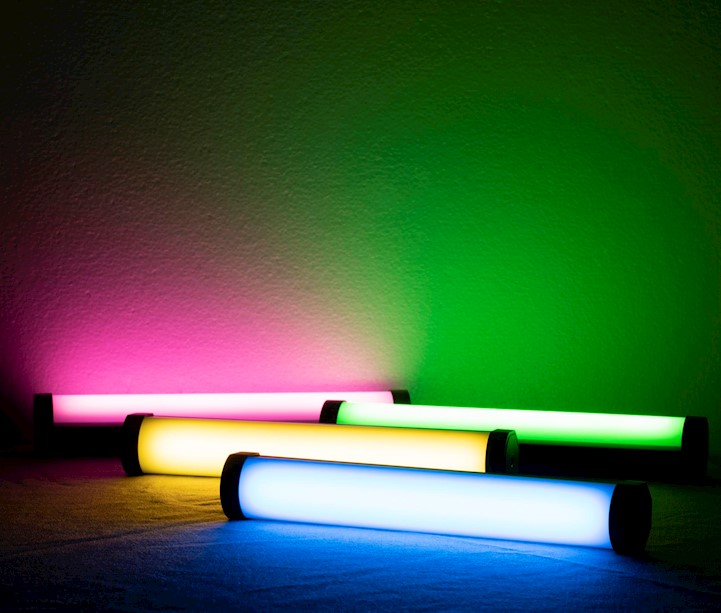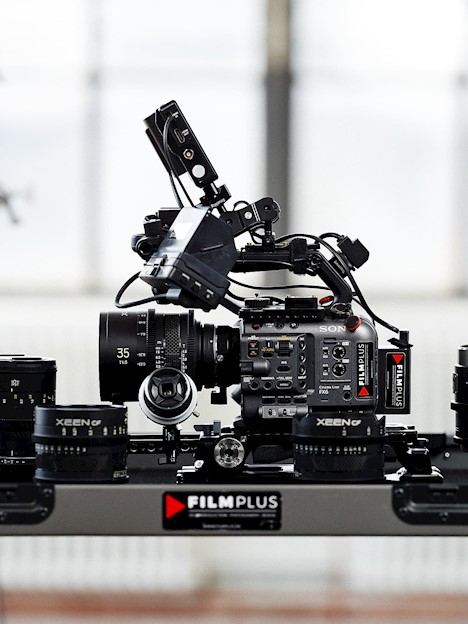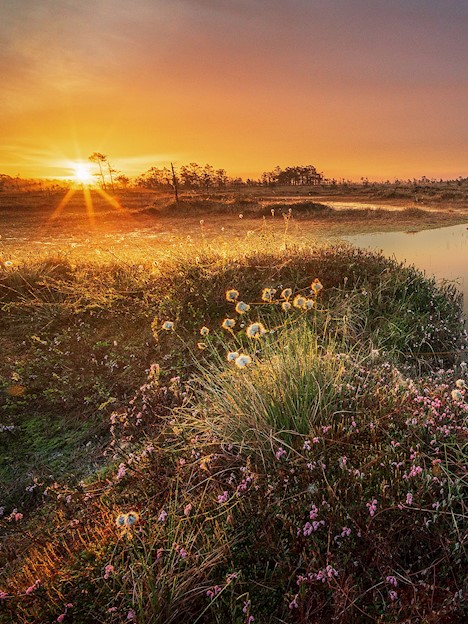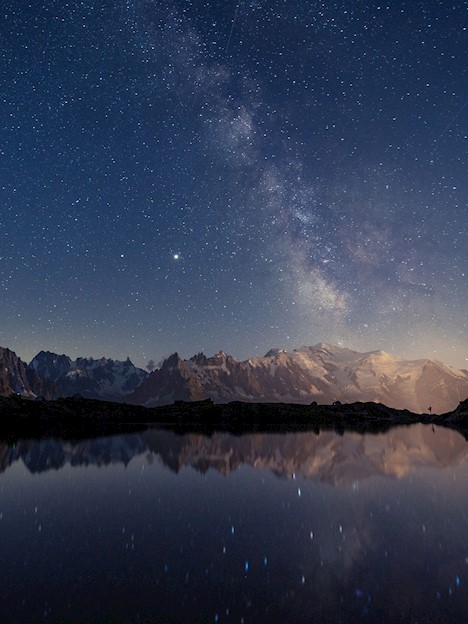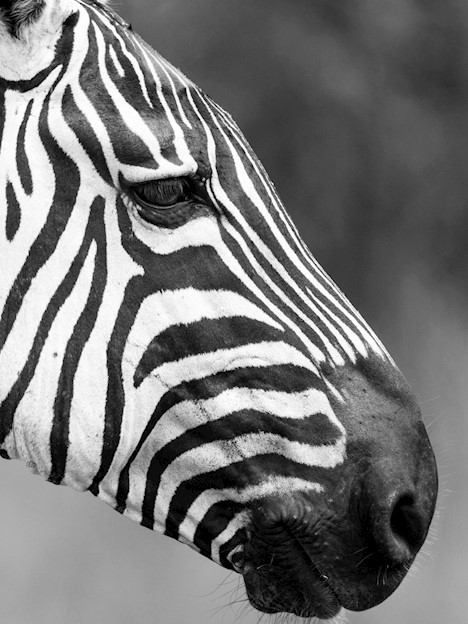Article written by and all photos shot by our polish ambassador Michał Warda.
Original article can be found here (in Polish).
There is one question that absolutely every couple asks us. What if it rains? We usually reply: great, we like challenges. We have our light and years of practice. Being completely honest though; on the scale of challenges - rain and lack of sunshine is absolutely the least of our worries. What's more, you can use this climate creatively. In such situations it's usually easy to see which photographer can find himself in a difficult situation and which cannot.
There are situations that are much more difficult, however; we were recently commissioned to record a statement from an expert. Unfortunately, for various reasons, the only room without the noise of fans was a small office room filled with cardboard boxes. Add to that white walls and massive reverberation. We had to create something from nothing.
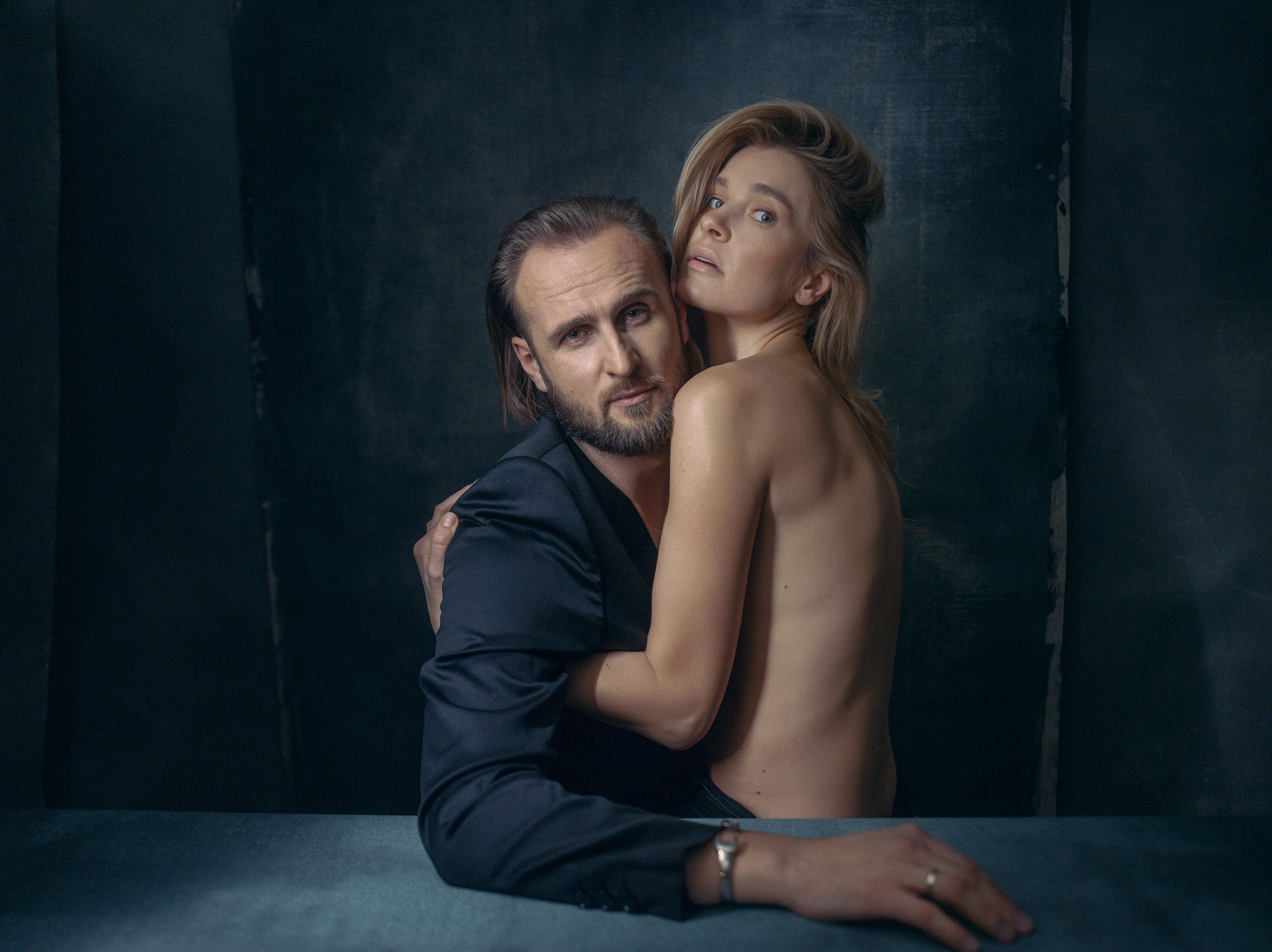
When we were starting our adventure with photography, good quality continuous light was out of reach for mere mortals. The professional lights found on movie sets are still out of reach. Prices for a good HMI (hydrargyrum medium-arc iodide lamp) go into thousands, if not tens of thousands of dollars. If the client's advertising budget permits, they are rented from a rental company. Such lights have their own current requirements; you need a technical crew of several people and a lighting master. All this amounts to a serious price.
However, the market is changing and many photographers are becoming interested in film. This coincides with an amazing technological revolution. More amateur filmmakers are emerging than photographers. Today's mirrorless and cheaper film cameras offer excellent image quality and decent specifications. We can shoot and photograph at sensitivities not previously available, and consequently the light we use indoors can be much less powerful. Lots of new creative opportunities are opening up. Many companies recognized this and the market was flooded with a wave of cheap LED lights. Unfortunately, most generate a low quality light beam. The colour rendering index (CRI) in cheap LEDs is below the threshold of decency that is approximately 80. This manifests itself in the difficulty of getting the colours correct on film and in photographs. The higher the CRI, the better the colours are reproduced and the more natural the light appears. You've certainly encountered this situation when processing photographs from the first dance when the couple is illuminated by the white DJ light and you wonder why the skin tone doesn't want to jump into place.
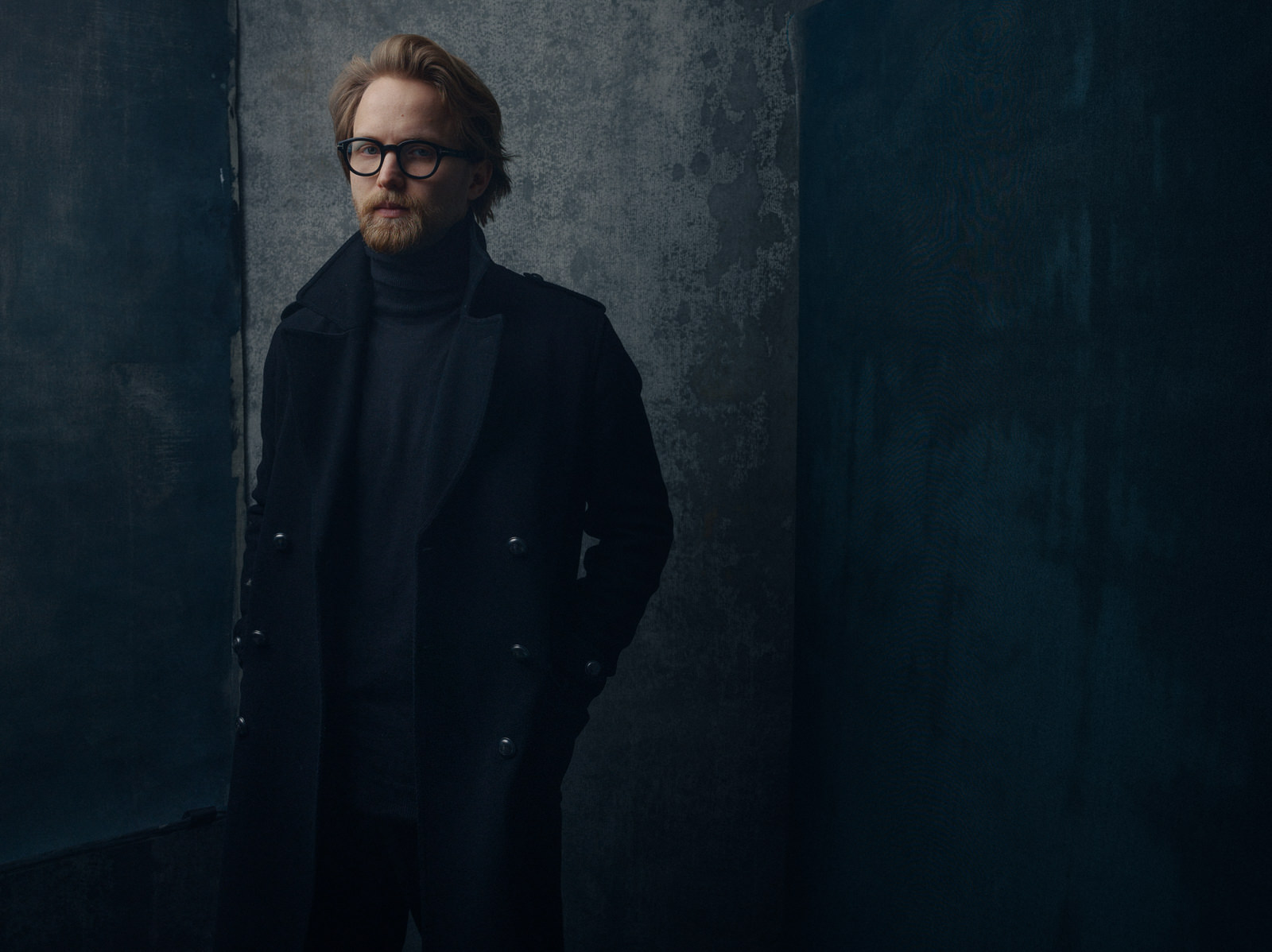
Whitesmoke Studio
Back to the lights: our clients don't always have the budget to build a large HMI-lit plan. It's also not always necessary; we do a lot of small projects, sometimes even cameral ones. But always with attention to the basic visual value - light. It can be said that one of the elements which sets both our news coverages and commercial work apart is the care for this very important element.
This can be compared to sound in the world of movies. Remember VHS? The picture may have been of poor quality, but if the sound was good, no one complained. Try watching a movie with poor sound. Unbearable.
It's the same with light. It is one of the foundations. So what lights are worth buying for photographs and filming?
Two years ago, even before the pandemic, we started looking for lights that we could use for both film and portraiture. We have had the same flash for years - portable HENSEL generators with 4 heads. We have done dozens of commercial shoots with them. However, there are some projects that require a different approach. Movie approach. We are working on the whole scene and not just the model's face. Continuous light works perfectly in these situations. Somewhat better quality LEDs emerged on the market. Unfortunately, as is usually the case in Poland, in the early period they would be unavailable or simply too expensive to import. The Ledgo LG-G260 MagicHue panels in particular caught our eye. We started to look for information about the company and it turned out that apart from the fact that one of our favourite "indie" filmmakers Nik Pilecki works with it, slightly cheaper versions of Ledgo lights appeared in the Polish market, targeted at a different group of people - NANLITE lights.
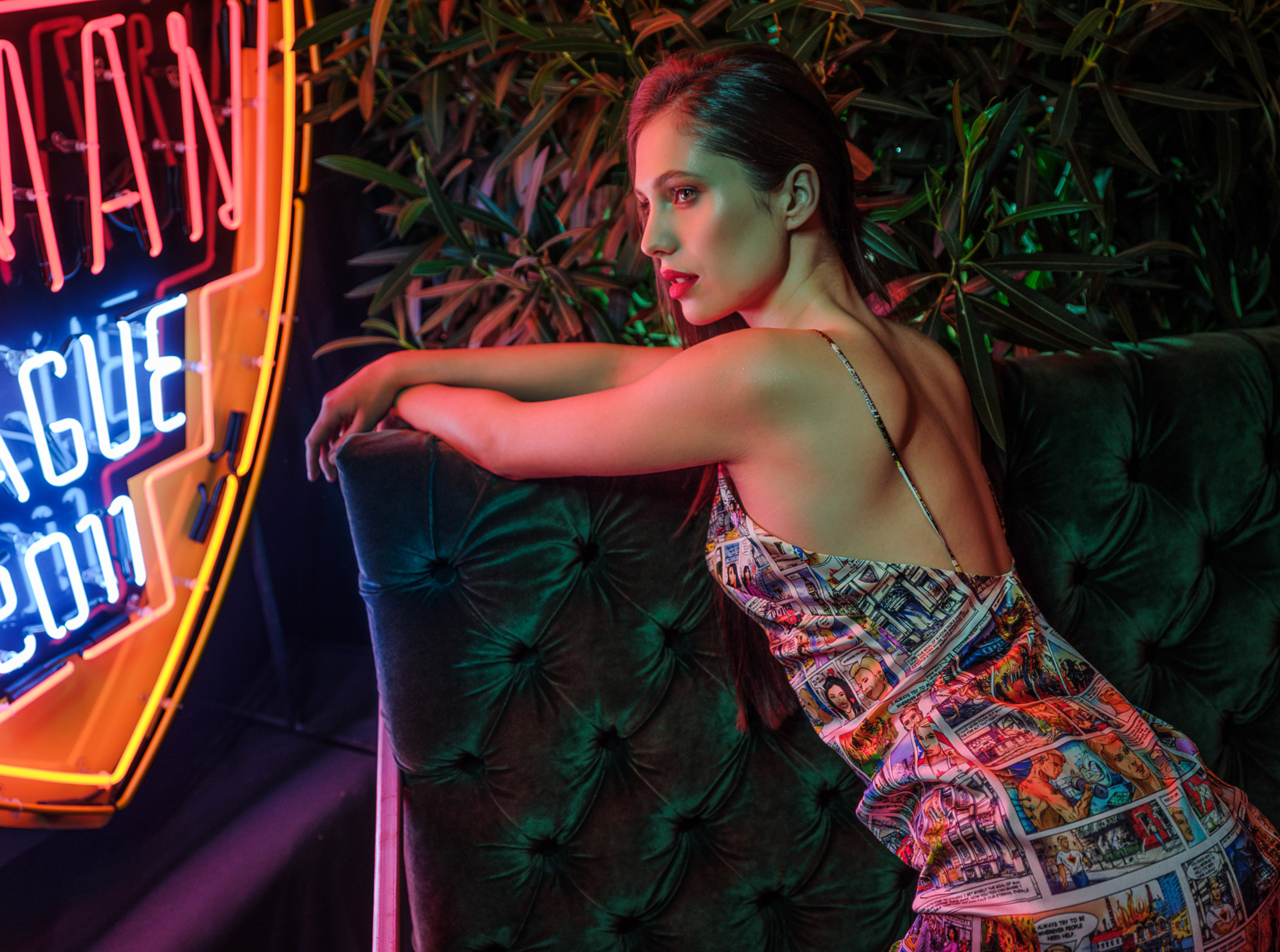
To answer the question of what lamps to choose for photography and filming: over the last year we bought the following models: Forza 500/300/60/60b and Pavotubes 30c, 15c and 6c II. We've done a ton of projects on these lights, most of them commercial. Image and product shoots and films, portraits and engagement sessions. We have used them for commercials and sports films, weddings and private projects. We also did some studio, family and women's (nudes) sessions on them. They have travelled many miles with us without a single failure. Our set was recently joined by a projector designed for the smallest lamp in the Nanlite family. Its name is Forza 60b and it made a huge impression on us. Skillfully used it can replace and simulate the sun.
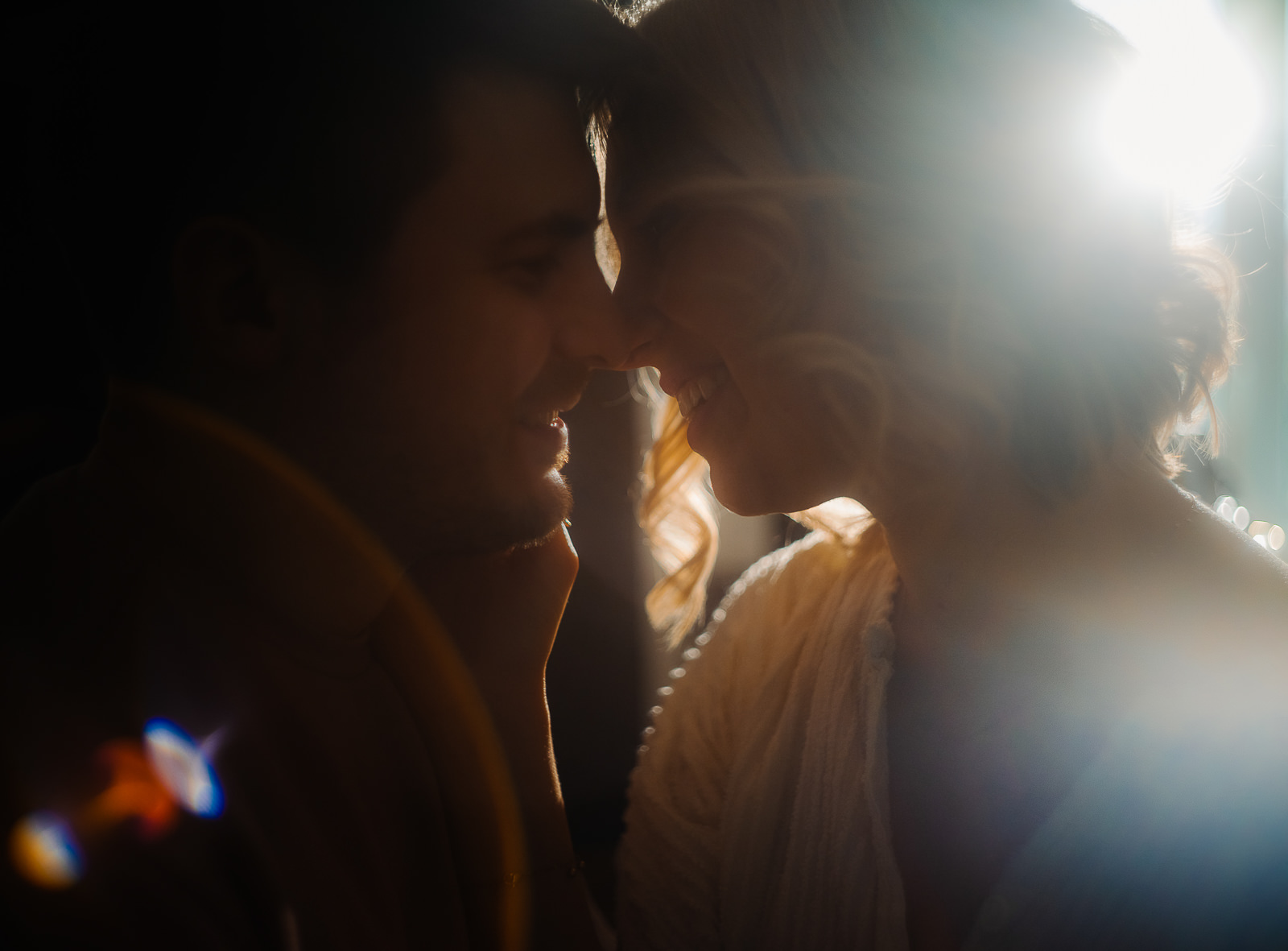
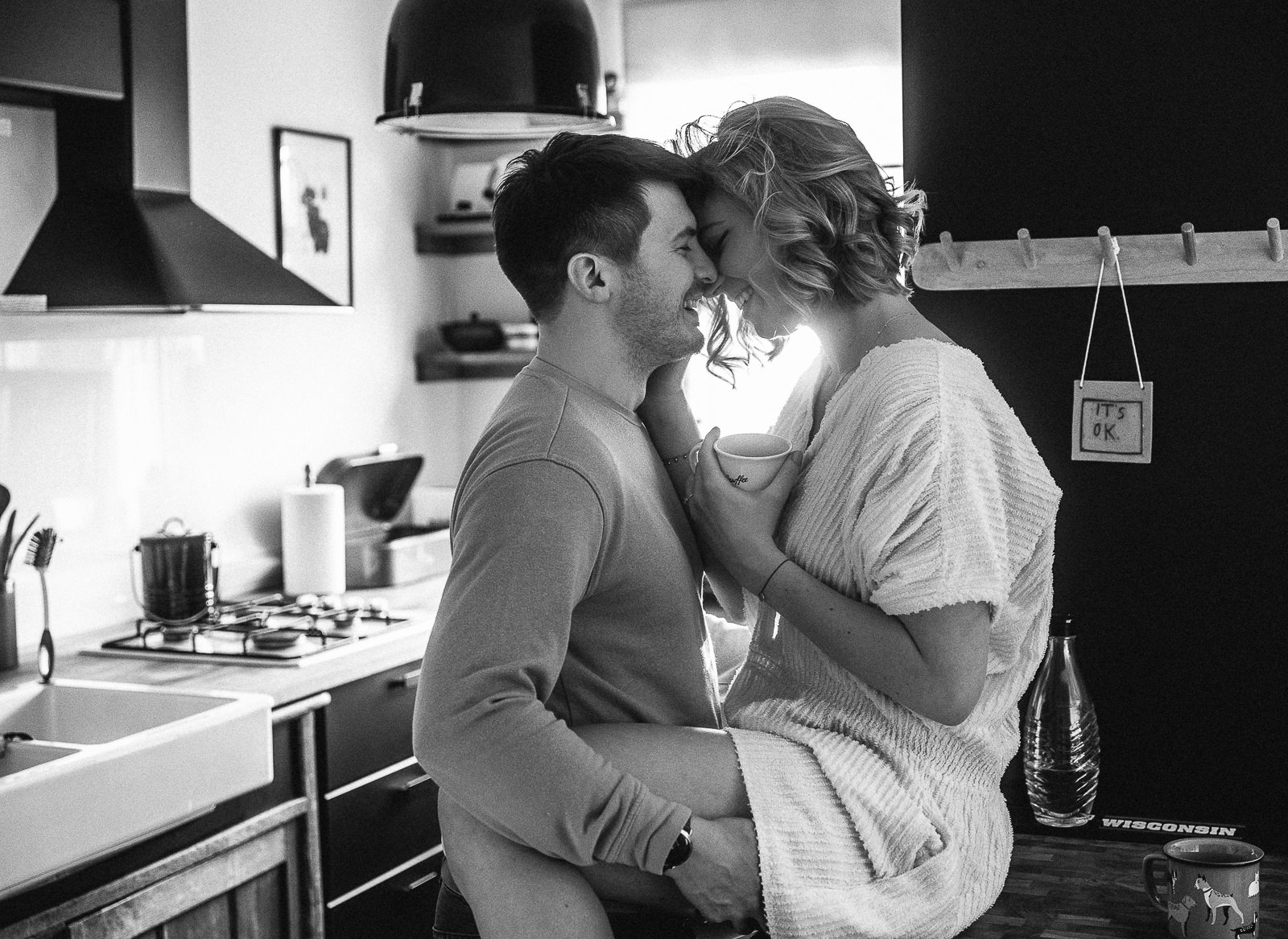
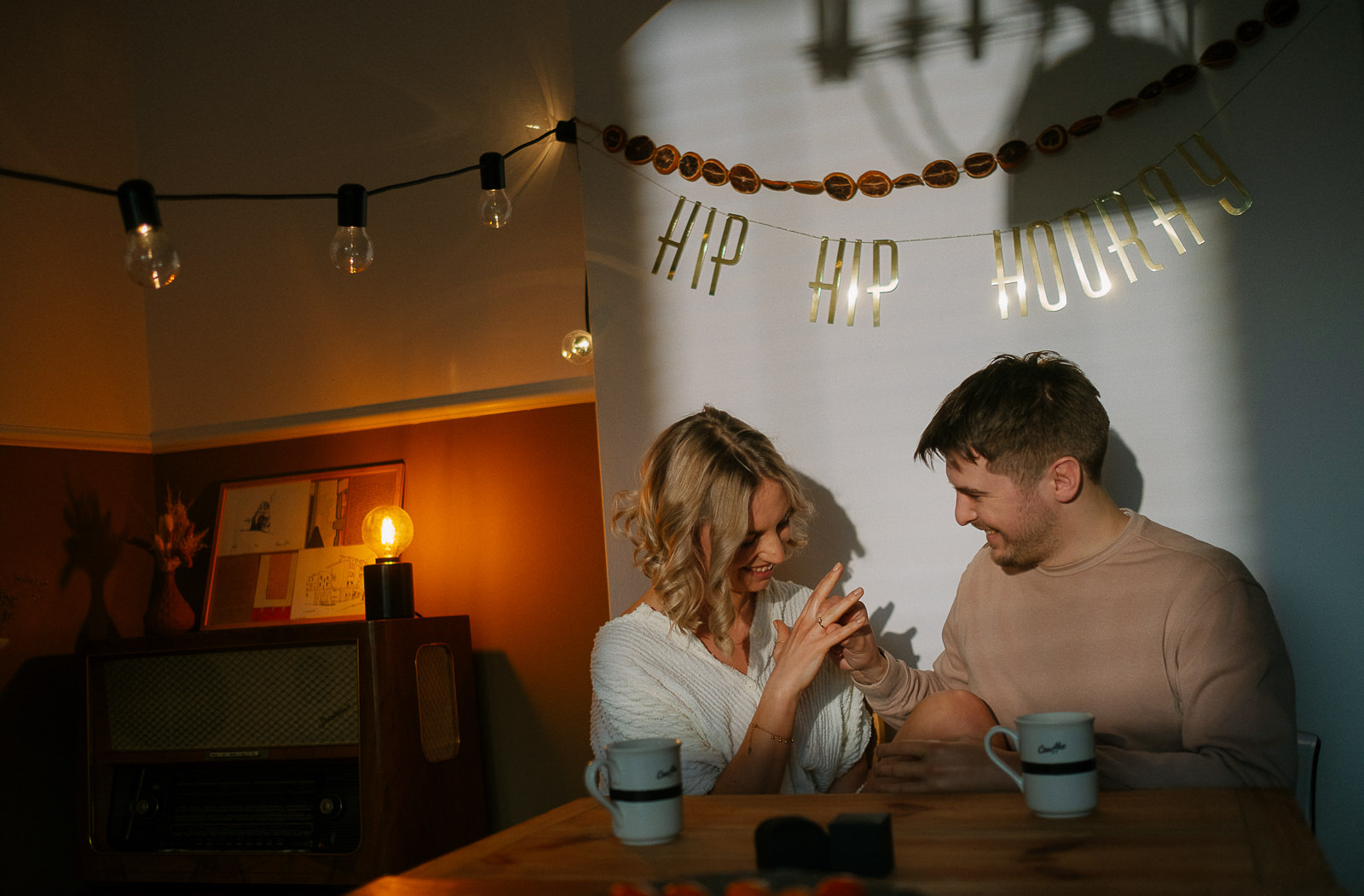
Our review and recommendation are based on over a year of experience and use in a wide variety of circumstances. As usual - we want to describe the utility qualities (leaving the technical parameters to others). The light is qualitatively very good. The lamps you want to use must meet several conditions:
- They must be small enough to travel with
- They must have a good or very good quality of workmanship and provide good ergonomics - in short, they must not be complicated to use. Ideally there should be accessories available to change the character of the light and usability. The added benefit would be built-in lighting effects to simulate TV, police lights or thunderstorms, for example. A useful thing to have in a movie. Remote control or app control is standard these days.
All Nanlite lights meet these conditions. The only thing we didn’t test is the optional Wi-Fi modules. We haven't had a need for it, but this option certainly comes in handy on larger sets. What works great with the Forzas is the remote. The head is usually mounted high and without the remote control the comfort of use would decrease significantly.
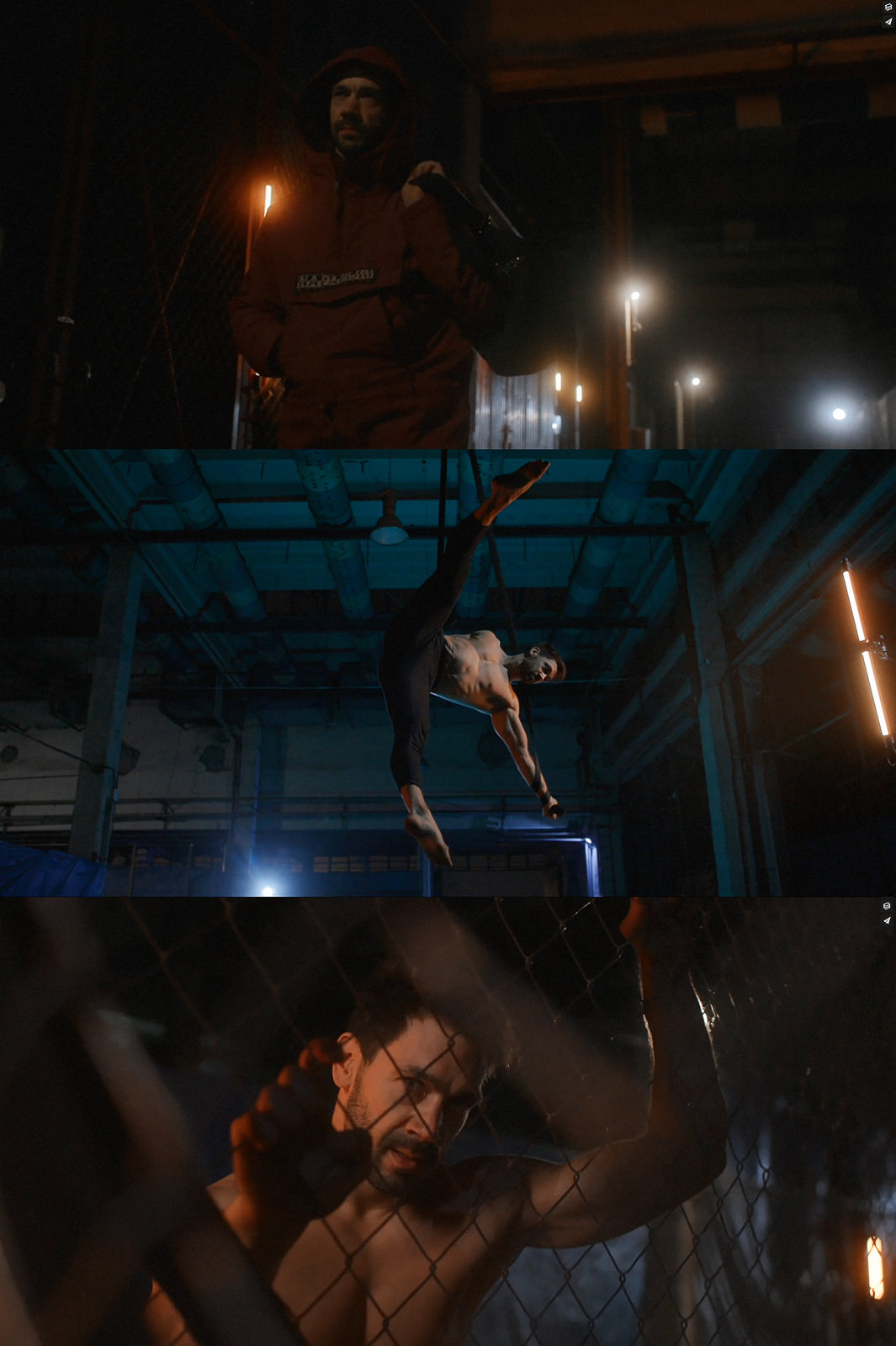
Let's start with our favourite gadget: the Pavotubes or, as we affectionately call them, the lightsabers. Even Jacek Poręba liked them so much we did a little duel together ;)
Pavotubes come in three variations - 30c, 15c and 6c. 30c is the manufacturing standard. The sword is 130 cm long which is exactly the length of the popular 4ft Qusars. The 15c is 90 cm and the 6c measures just over 25 cm. It is ideal for illuminating hard to reach places or as an effect light at night.
All Pavotubes provide an impressive CRI 98 between 2700 K - 7500 K. But that's not all. Pavotubes are primarily RGB lamps - they can shine with virtually any colour and saturation. They have a built-in battery, of course, and are fabulously easy to use. The 6c additionally features built-in magnets, allowing you to mount it without additional accessories on any metal surface, which is incredibly useful in situations where you want the light to be visible in the frame.
Given that the light we simulate using PAVO can be most often found in interiors, I assess the power of these lamps as quite sufficient. We mostly use them at 10-20% power anyway, so there’s plenty of reserve left. The battery in 30c and 15c usually lasts a full day of shooting. The short 6c's sometimes need to be recharged between shots. The longest they lasted was about two hours of illumination at 50% power. But you have to remember - this is a special task light and not a "key light”, although in specific conditions we used it as the main light. It is very soft and pleasant. It works great especially for sports sessions.
The number of applications in which Pavotubes will work is almost countless and depends only on your creativity.
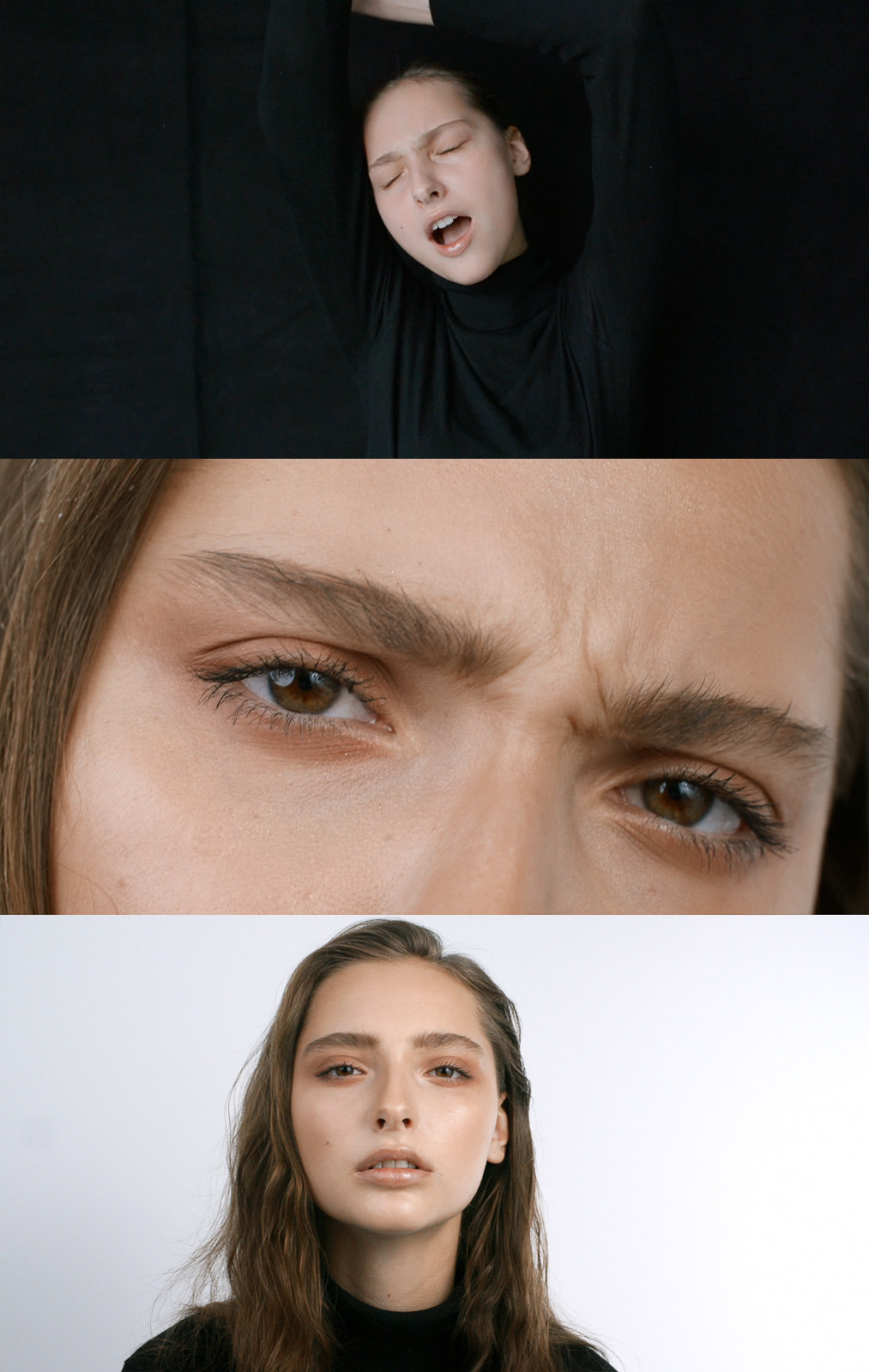
The Nanlite Forza line of lamps is a slightly different concept. To each of them you can attach modifiers with a bowens mount (to Forza 60 through an adapter) and use them like traditional photographic lamps. The 300's and 600's are very powerful and will also work well for portraiture. We, however, like to sculpt with light using different types of diffusion, flags and valves. The Forza 60 and 60b are an excellent introduction to both learning light control and creative use as an auxiliary light to the main light or as the only light in smaller sets or situations where we can use our favourite accessory, the projector/gobo. All you need is an appropriate gobo (a piece of metal with cut-out shapes, which you place between the lamp and the projector or in front of the lamp that projects an intense light).
The Forza series lamps are often available in two variants - regular (5500 colour temp.) and with the mark “b” (B-colour), which can be controlled in a wide range of colour temperatures from 2700 to 6500 kelvin. On top of that, you can equip yourself with a Fresnel with barn door, a small or large octagonal lighting kit and any other modifiers with Bowens mount and the above mentioned wireless control. The Forza 500 and 300 can be powered from optional V-mount film batteries; Forza 60 comes with a very practical mount that can accommodate very popular and inexpensive NPF series batteries. We really like working this way - it gives us complete independence from the power source.
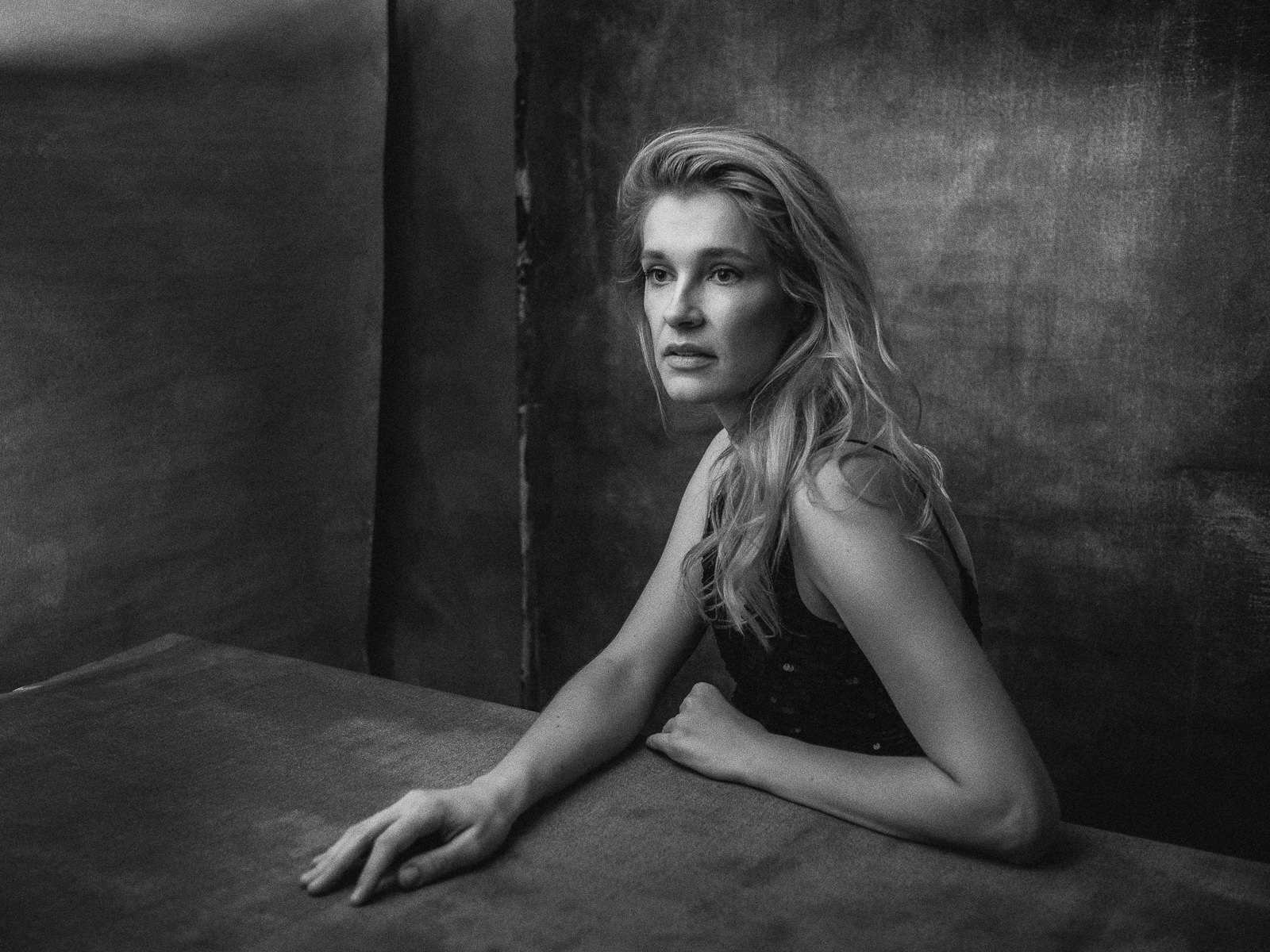
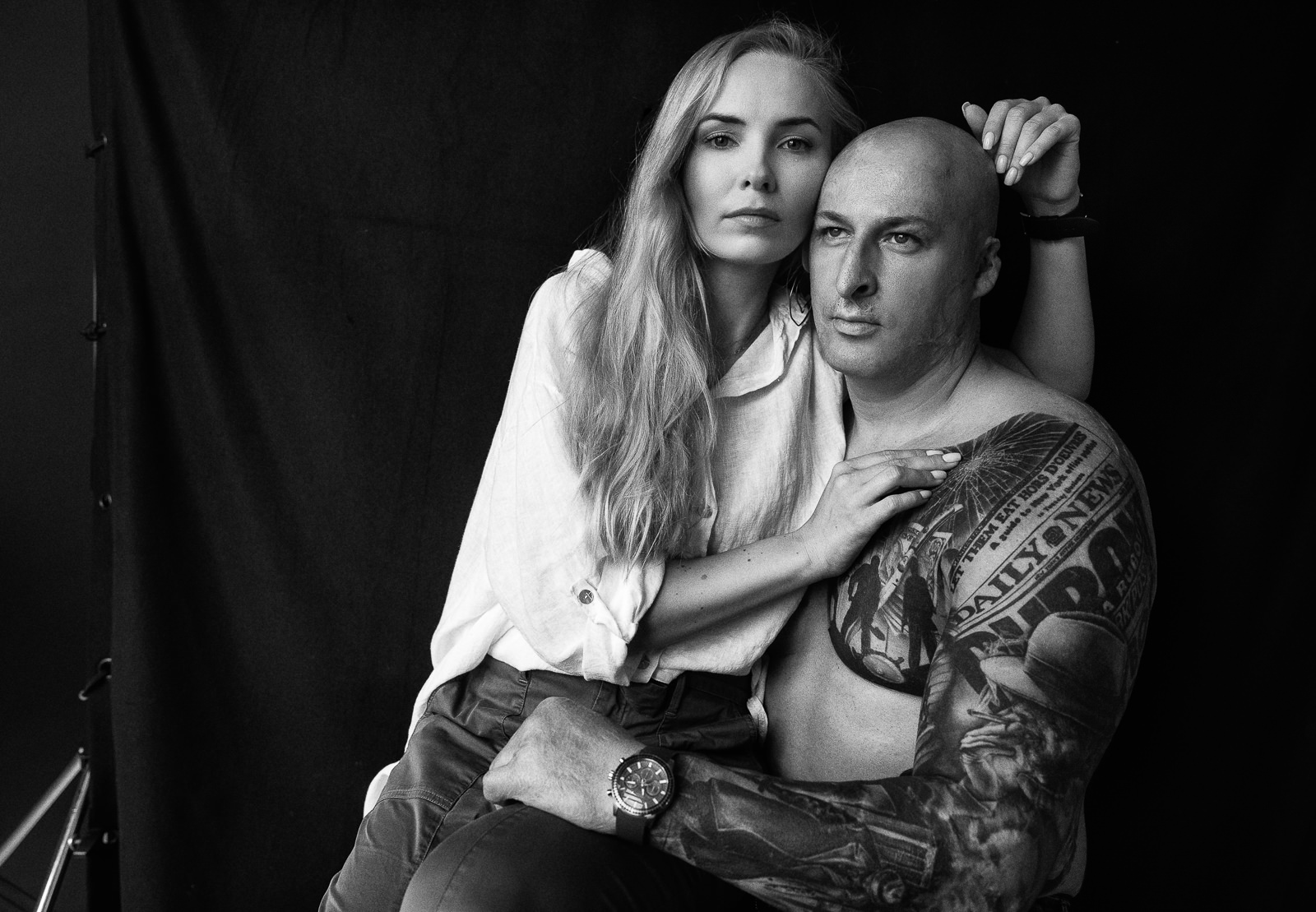
Do we recommend Nanlites? Definitely yes! Recently on set a fellow cinematographer and I were mixing different LEDs and compared the Forza 300 to the Aputure 120d. Testing has shown that the Nanlites are more compact, well made and offer first class light quality. Worthy of our wholehearted recommendation.
We warmly invite you to follow us on Instagram, where we regularly feature snapshots and backstage from our shootings. That's where you'll most often see Nanlites.
We also have hot news - our passion for good light has been recognized and we've been offered a partnership with Nanlite, which we're very happy and proud of. So, you can expect on our blog and YouTube channel (yes, yes, we will be youtubing) materials from the sessions, thoughts and advice related to light and photography. Stay tuned! Michał is already twirling his moustache;)
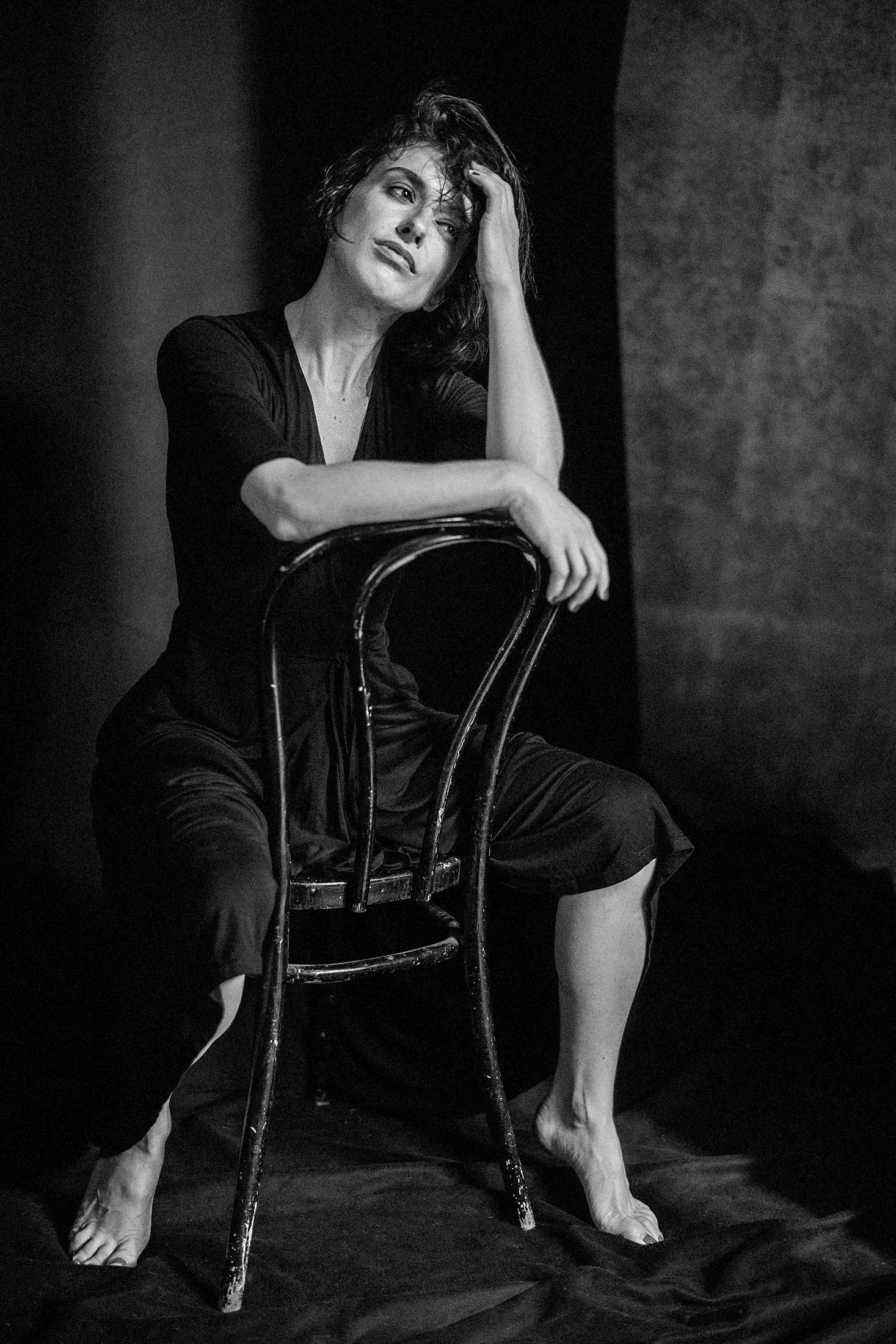
All images used in this material were, of course, lit with Nanlites. Some of them are excerpts from our films. Below is a picture that perfectly shows how easy Pavotubes can be used. In the picture by Franek Mazur (colour by Warda) you can see Michał shooting Leszek Możdżer; the light is held by producer Eja Trzcińska ;)
